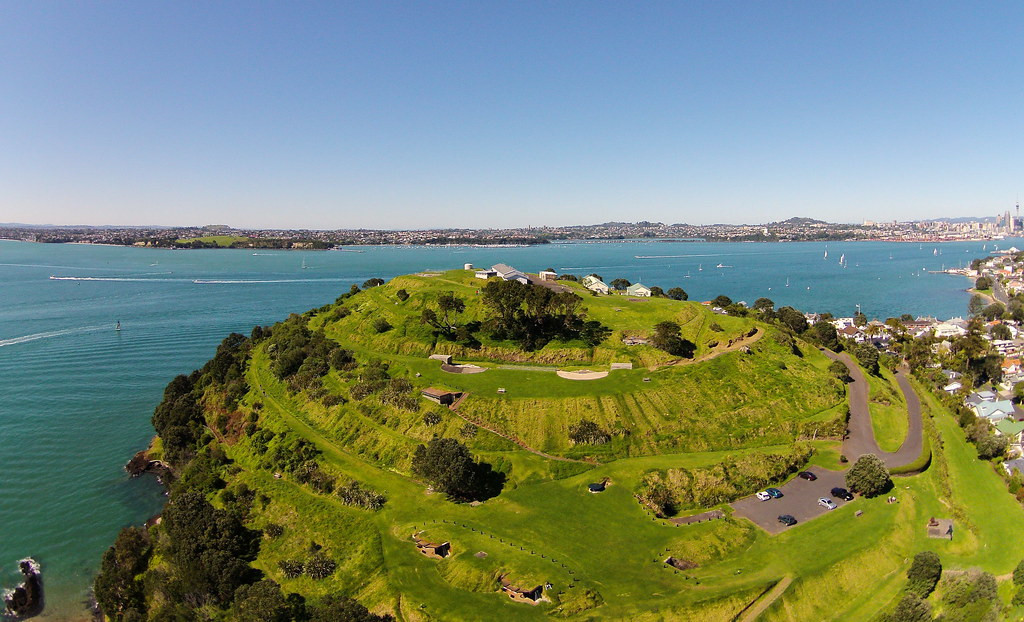1 Fort and 2 Cultures

The peninsular we know in modern times as Devonport was one of the earliest parts of Tāmaki Makaurau / Auckland to be settled by early Māori. The volcanic soils, the rich marine environment and the prominent Maunga (mountains) provided an ideal location for settlement.
The main pā (fortified settlement) was at nearby Takarunga / Mt Victoria. Maungauika was only moderately terraced and the lower slopes used for the growing of crops. Remnants of historic gardens on these slopes were evident at the time Europeans arrived in Auckland, but are since lost. European visitors in the 1850's describe a Māori settlement at the foot of Maungauika with organised gardens and areas for processing fish.
Little remains on the landscape but it's worth a visit to see the ancient terraces and extraordinary views.
The strategic location of Maungauika / North Head meant that it was an important coastal defence site from the earliest colonial period.
Fears of a Russian invasion of the Pacific led to the installation of a muzzle-loader fort in 1885. Between 1888 and 1914 some of the buildings housed prisoners who excavated many of the tunnels that link the batteries and their service facilities.
For a time, Maungauika / North Head was known as Fort Cautley, named in 1885 after Major Cautley of Royal Engineers, but this name has now lapsed. During the second world war, defences were further developed.
Defence forces withdrew completely from Maungauika / North Head in the 1990s.
Administration of Maungauika / North head was transferred to the Tūpuna Maunga Authority from the Department of Conservation in January 2019.
An active programme is underway to restore and open some of the tunnels and structures on site.


